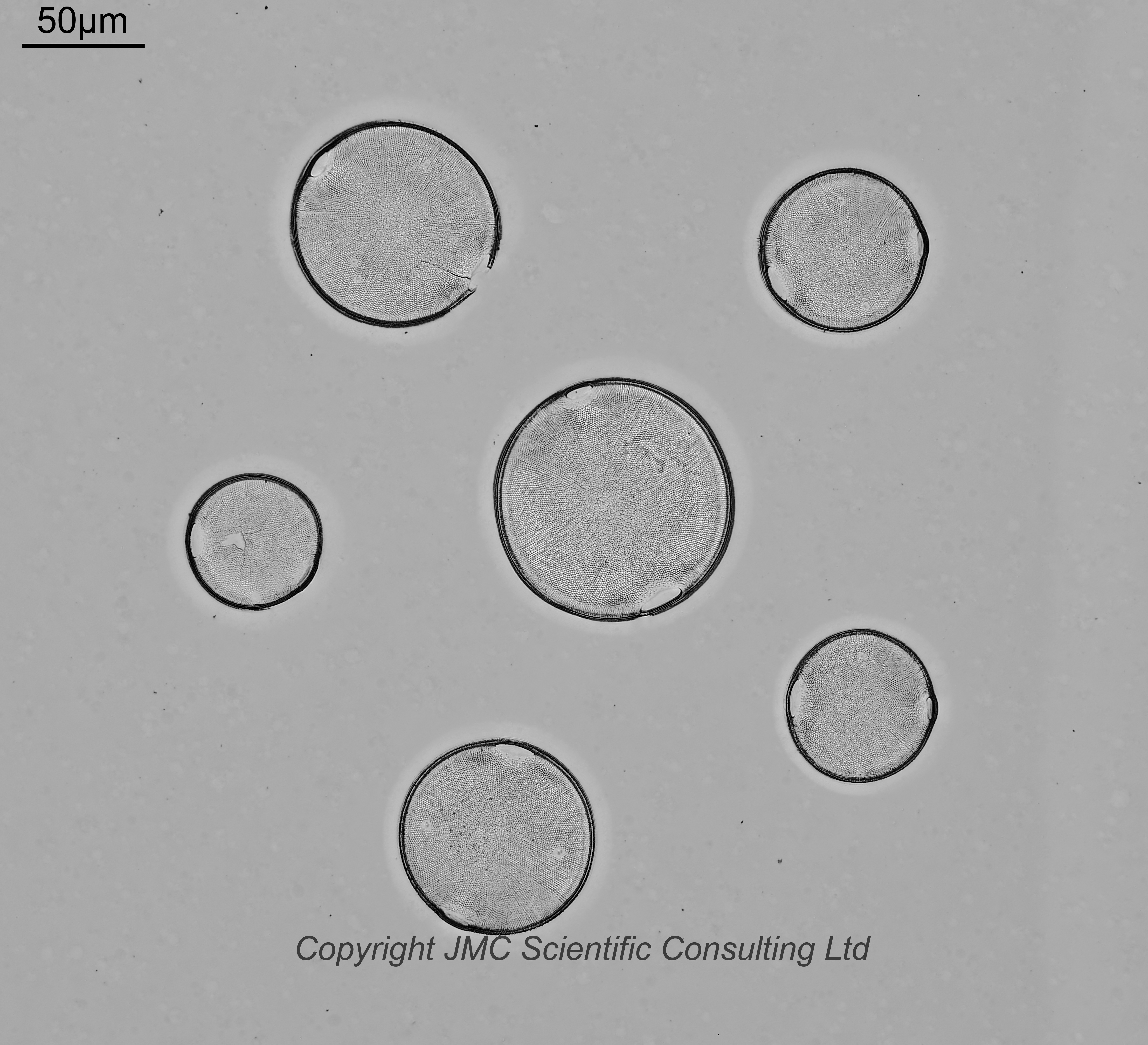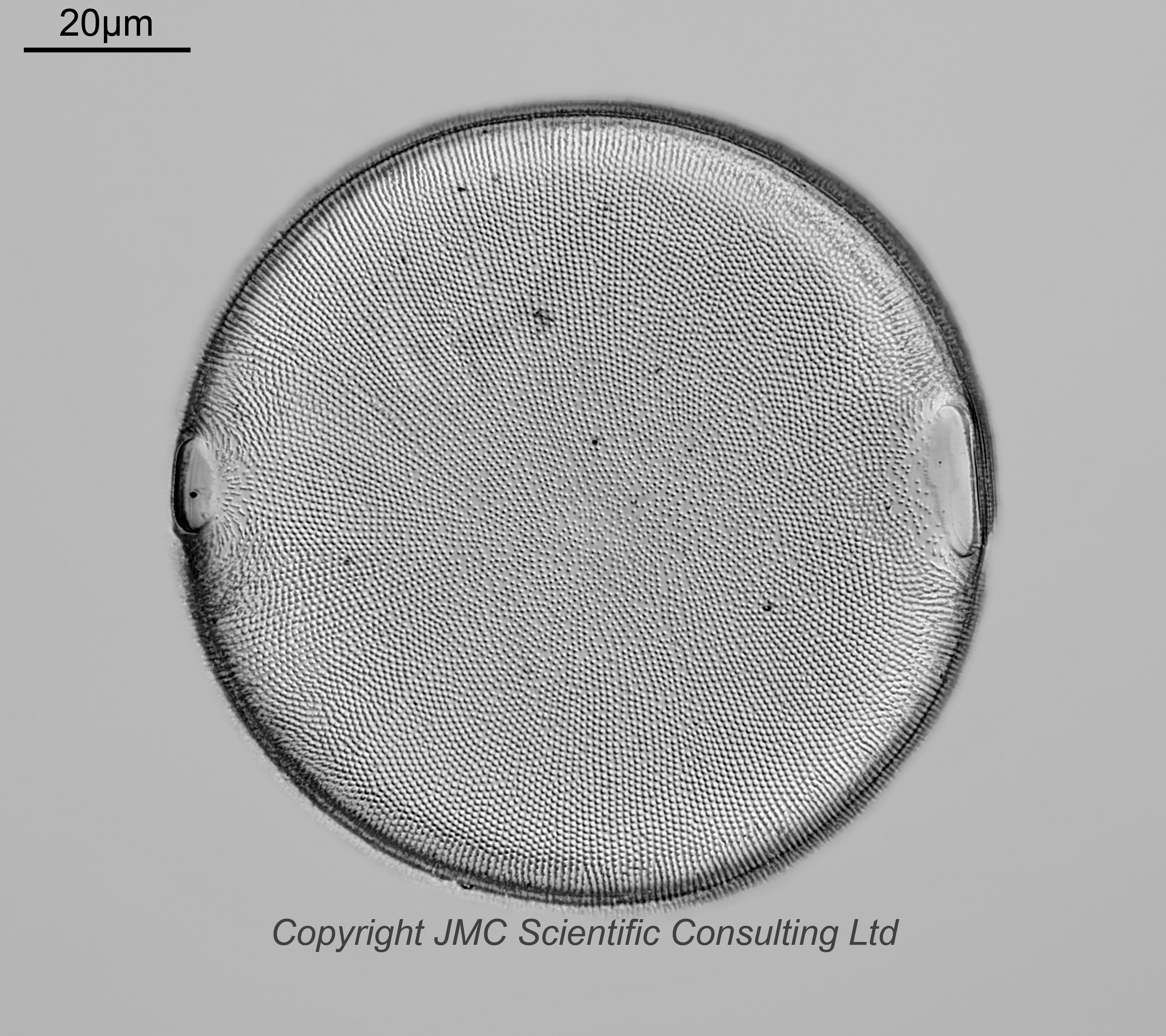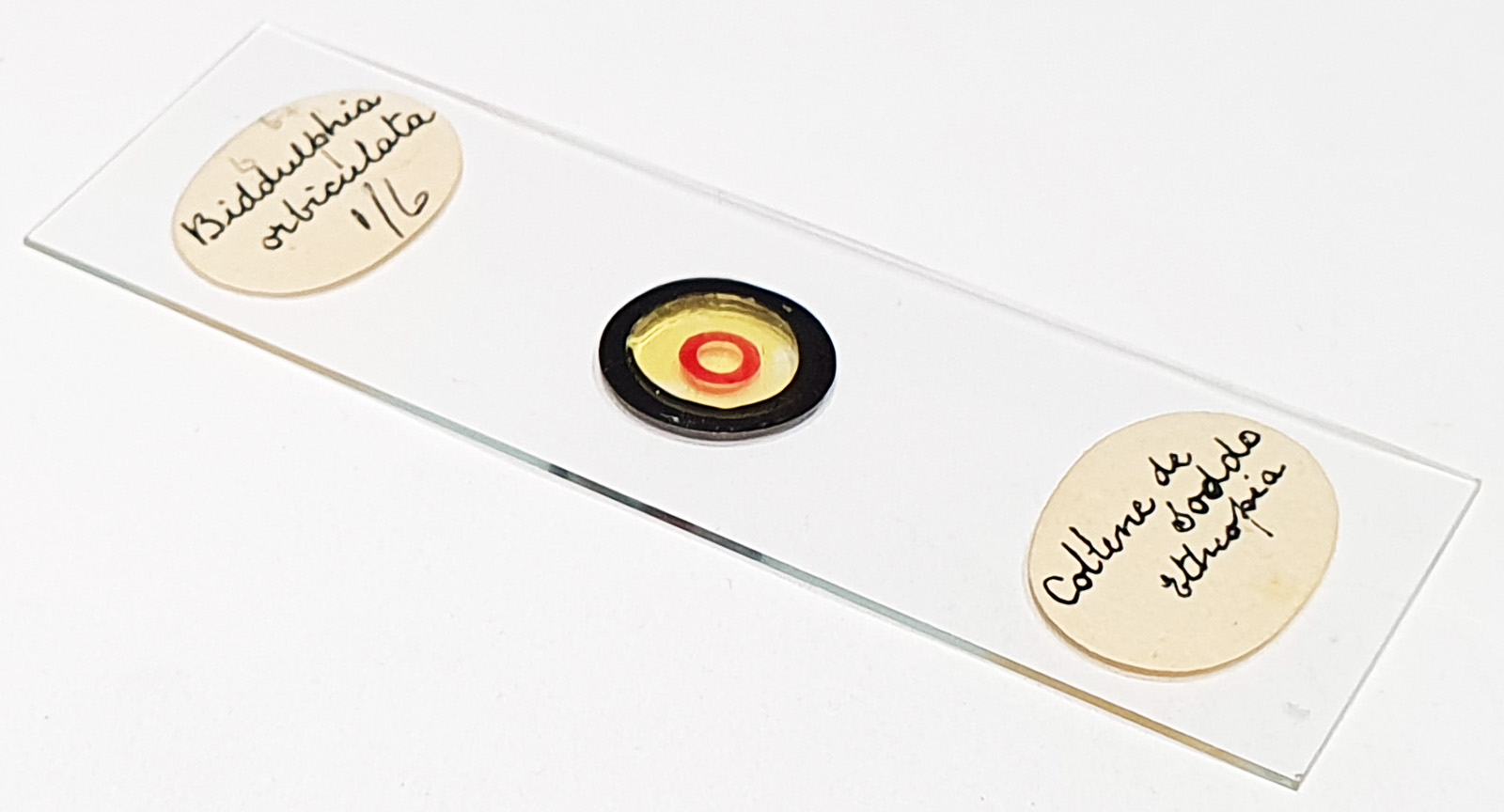


An arrangement of six Pleurosira laevis var. paludosa from Colline de Soddo, Ethiopia. Yes, I know the slide label does not say that, I’ll come back to it in a minute. No makers name, but this is by JA Long. Olympus BHB microscope using 450nm LED light. Main image of the central diatom using 63x Leitz Pl Apo 1.4 objective, oil immersion. Olympus Aplanat Achromat condenser, oil immersion, oblique lighting. 2.5x Nikon CF PL photoeyepiece. Monochrome converted Nikon d850 camera. 48 images stacked in Zerene (Pmax).
Back to the name. The slide says Biddulphia orbiculata. It looks like a Biddulphia to me, but as I searched for information on this one, the less sense the name made. Synonymised names for B. orbiculata are;
Triceratium orbiculatum var. orbiculatum Shadbolt, 1854.
Lampriscus orbiculatum var. orbiculatum (Shadbolt) Peragallo & Peragallo, 1902.
Lampriscus orbiculatus (Shadbolt) Cleve, 1901.
Triceratium orbiculatum var. orbiculatum Shadbolt, 1854 is written about in Shadbolt, G. (1854). A short description of some new forms of Diatomaceae from Port Natal. Transactions of the Microscopical Society, New Series, London, 2(1): 13-18, plate 1, figure 6. However this figure shows a 3 lobed, triceratium like diatom, which looked nothing like the ones on this slide.
Searching further for possibilities, I remembered my example of Cerataulus thermalis var. chinensis, also known as Pleurosira socotrensis (published in: Compère, P. (1982). Taxonomic revision of the diatom genus Pleurosira (Eupodiscaceae). Bacillaria 5: 165-190.). Looking through the Bacillaria article, I came across Pleurosira laevis var. paludosa with images (which were a very good match for these ones) and it was from Colline de Soddo in Ethiopia. Based on the matching appearance and location it is from I believe these are Pleurosira laevis var. paludosa. This is a fossil diatom.